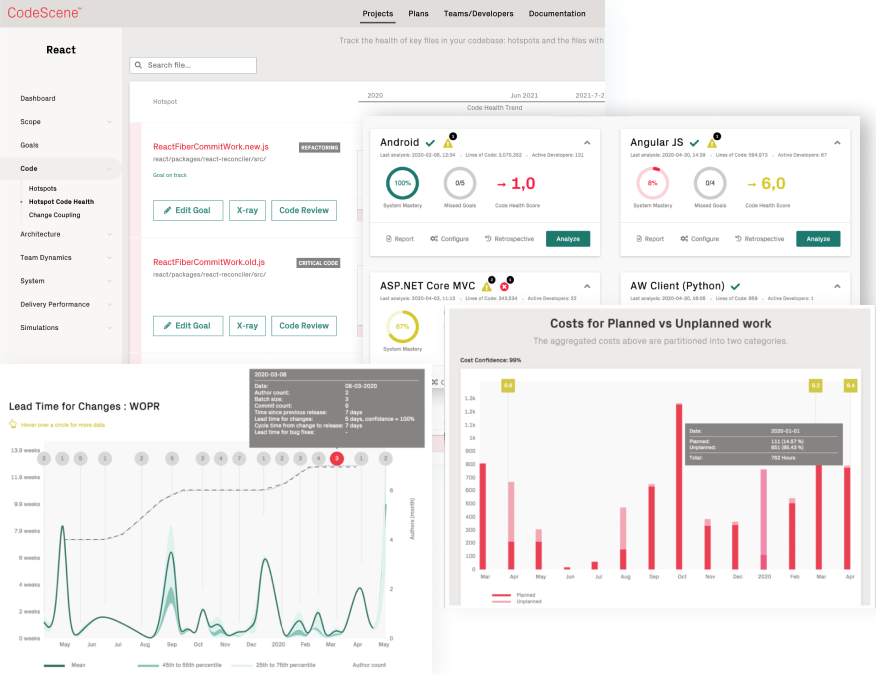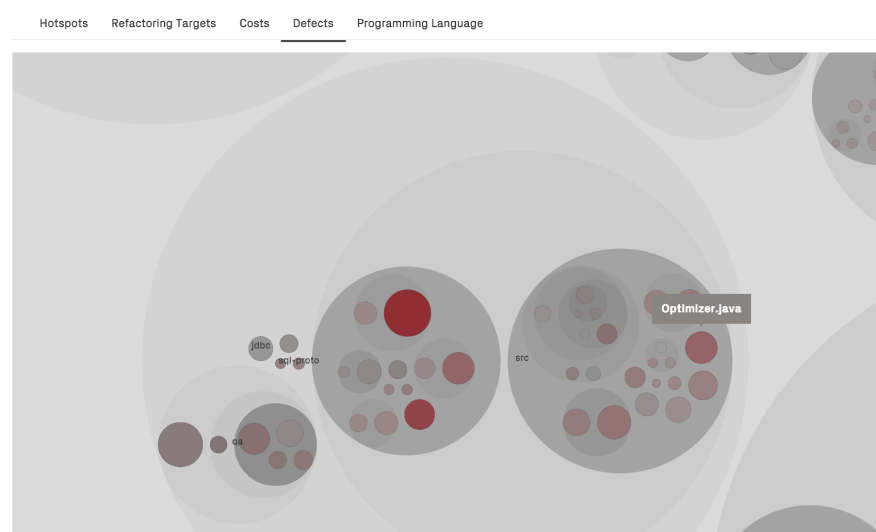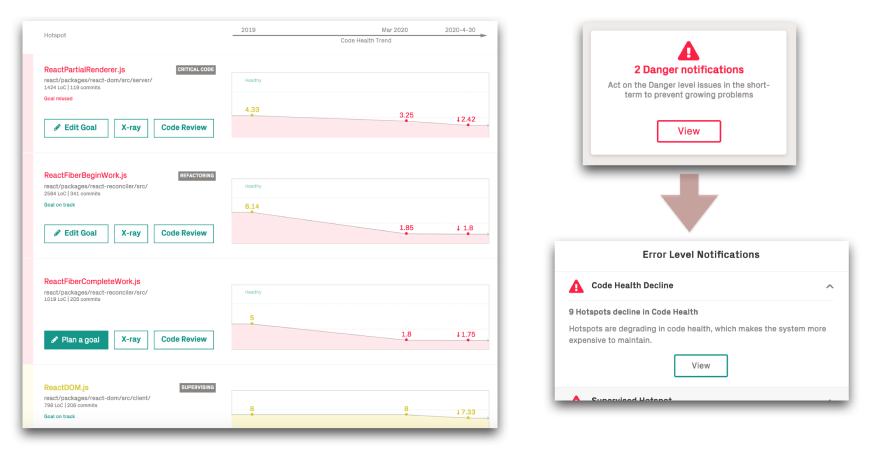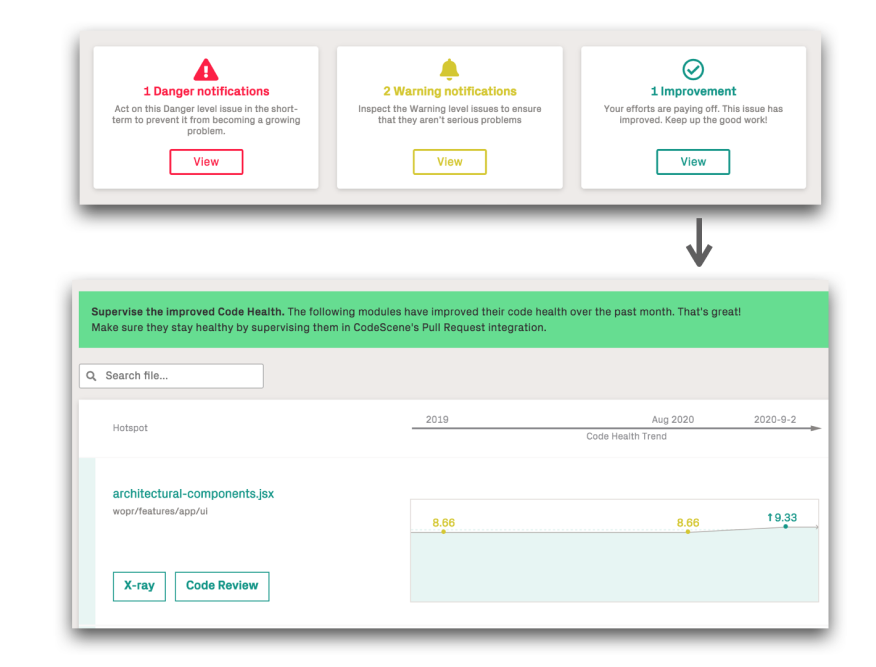We’re proud to announce a new release of our SaaS product, codescene.io!
CodeScene – Dawn of a new User Interface
The most visible change in the new CodeScene is the user interface. We have re-worked and clarified the code health trends so that it is easy to visually spot problematic hotspots. We also improved the responsiveness of the user interface so that the tool behaves well even for large codebases with million’s lines of code.
In addition to that, we also introduce several important features like mining defects from GitHub issues and cost trends via our Jira and Trello integrations.
- New Dashboards: CodeScene 4.x introduces a new user interface that makes it easier to navigate, filter, and explore. We have also optimized the performance for users that have many CodeScene projects. You’ll never miss a critical hotspot.

CodeScene 4.x introduces a new user experience with new dashboards.
- Integration with product lifecycle tools for Cost Trends and Delivery Performance: CodeScene now integrates with Jira and Trello in order to put your technical and organizational metrics into a business context. See an example here.
- Mine Work Trends and Defects via GitHub Issues: In addition to the existing Jira and Trello support, this new version lets you use GitHub issues as a defect tracker to calculate defect densities on hotspots.

CodeScene integrates with GitHub issues to visualize defect densities, as well as providing defect and cost trends.
- Alerts, Early Warnings, and Positive Reinforcements: CodeScene presents the most critical findings directly on your project’s landing page. These warnings alerts you on declining code health and warns you about a likely future decline in critical hotspots. CodeScene also makes sure to inform you when code improves its health.

CodeScene provides automated alerts when a critical module declines in code health.

CodeScene provides positive reinforcements on refactorings and design improvements.
We hope you will enjoy these new features as much as we do! Remember that you can read more about CodeScene here.